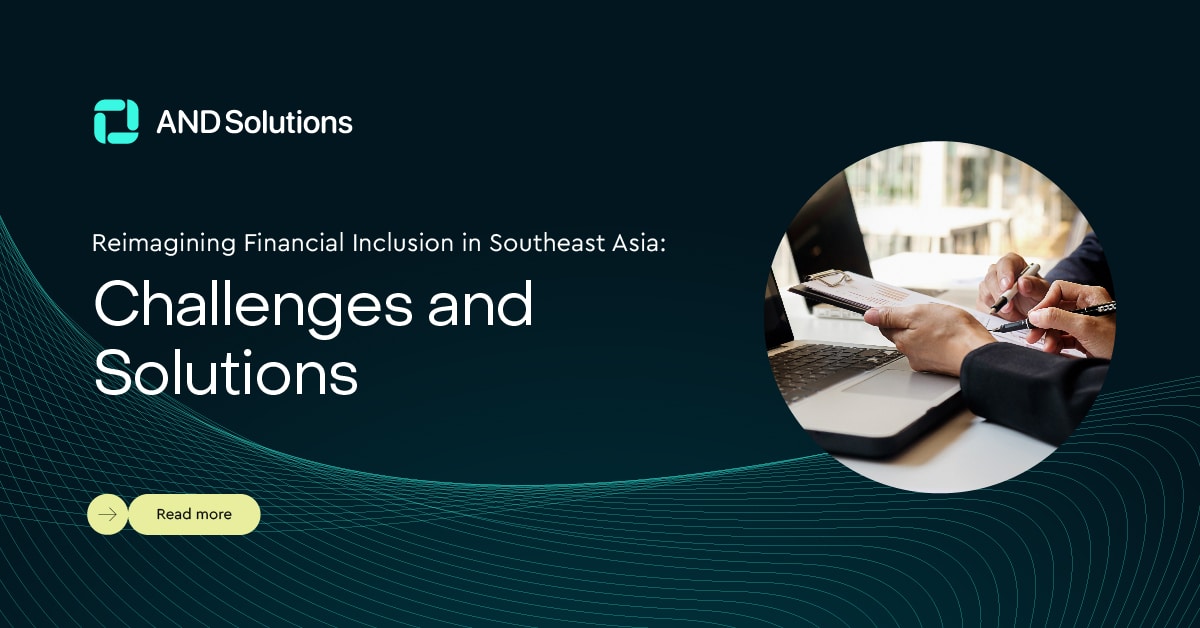Just a few years ago, generative AI was a mere buzzword. Then came ChatGPT in 2022, and suddenly, this novel concept became an undeniable force reshaping our world. This AI revolution, powered by sophisticated large language models, has ignited a global technological race. From established corporations to nimble startups and visionary researchers, everyone’s vying for a piece of the AI pie. And it is not by accident, because this new wave of AI promises to reshape the financial industry, at a steady and incremental rate, by providing new capabilities, revenue opportunities, and cost reductions. Over time, that could tilt the competitive landscape in favor of those banks that best utilize AI’s potential.
How financial institutions can optimize operations with the help of AI – from data analytics to credit scoring
AI: Expanding Access to Credit
Traditional credit bureaus rely heavily on formal financial data, often excluding deserving borrowers who lack a credit history. This frequently applies to freelance workers or individuals in the informal sector with non-traditional income streams. Without a documented credit history, it becomes difficult for lenders to assess their creditworthiness and offer them essential financial products. These individuals are financially responsible but face an invisible barrier due to outdated methods of credit assessment.
AI, however, can analyze a wider range of data, including alternative sources like income streams and digital footprints. This allows for a more holistic assessment of creditworthiness, bringing the unbanked and underbanked population into the formal financial system.
For instance, LendMN utilizes AI solutions for lending to evaluate creditworthiness, especially for individuals with limited credit history. In addition, we provide affordable credit scoring solutions and collaborate with local institutions to expand access to financial services. This opens doors for many who were previously excluded from traditional loan options.
Not all banks, or indeed regions, will move at the same speed. I expect large scale and bespoke AI-driven client services to emerge first in countries where customers have more permissive attitudes to new technology.
Optimizing Bank Operations with AI
The integration of AI in banking operations is revolutionizing efficiency like never before. One key innovation making significant strides is intelligent document processing (IDP). These AI-powered systems automate the tedious task of data extraction and processing from various documents, transforming the financial landscape.
IDP solutions not only save valuable time for bank staff, but also boost accuracy and compliance adherence. This leap in efficiency allows banks to reallocate resources more effectively, focusing on customer service and strategic growth initiatives. As the financial sector embraces digital transformation, the adoption of AI technologies like IDP is paving the way for a more agile and customer-centric banking experience.
A look ahead: Upcoming AI trends within finance and fintech
The sheer level of investment and brilliance poured into this race leads me to believe the next frontier – Artificial General Intelligence (AGI) – might arrive sooner than anticipated, possibly within the next few years. This would mark a monumental leap in AI’s evolution.
Unlike current AI, AGI wouldn’t just mimic human behavior; it would possess the ability to think and act with human-like intelligence. One sector ripe for AGI’s transformative touch is financial services, particularly for the underbanked and unbanked populations.
While still in its early stages, generative AI has the potential to significantly improve efficiency and create entirely new business opportunities for banks. As with any new technology, challenges exist. Banks will likely invest heavily in testing and refining generative AI models before large-scale deployment. Additionally, human oversight (also known as human-in-the-loop) will remain crucial to ensure accuracy and compliance.
The tech impact on finance: Emerging technologies that may boost financial inclusion
The potential applications of AI and AGI are vast. It could shatter traditional barriers to financial inclusion by crafting personalized financial products and services tailored to individual circumstances and needs. This deeper understanding, facilitated by AGI, could pave the way for broader financial inclusion. Additionally, AGI could play a critical role in expanding credit access. By identifying and mitigating risks associated with lending to those with limited credit history, AGI could empower millions who were previously excluded from the financial system.
Financial inclusion goes beyond individual empowerment. When millions gain access to financial services, it fuels economic growth. Increased savings, investments, and entrepreneurship lead to a more vibrant economy. A World Bank study suggests that a 10% rise in financial inclusion can boost a country’s GDP by 1.5%. Imagine the economic potential unlocked by bringing millions of ASEAN citizens into the formal financial system.
How fintechs can help by providing financial services to the unbanked
Fintech companies are uniquely positioned to bridge the gap for the unbanked population in ASEAN. Unlike traditional banks with rigid processes, fintechs offer simpler and more accessible financial services tailored to the needs of this segment. They leverage AI and big data to assess creditworthiness beyond traditional metrics, making financial inclusion a reality for many previously excluded.
For example, GCash, a leading mobile wallet in the Philippines, has partnered with microfinance institutions to provide microloans to unbanked individuals. This collaboration empowers individuals and fosters financial inclusion.
The benefits of financial inclusion to economies – more innovation and higher spending
Financial inclusion isn’t just about empowering individuals; it’s a powerful economic engine. When millions gain access to financial services, it unlocks a wave of innovation and increased spending. Here’s how:
Fueling Entrepreneurship: Previously excluded individuals with innovative ideas can now access the capital they need to turn those ideas into businesses. This fosters a more dynamic and competitive business landscape.
Boosting Investment: Financial inclusion allows individuals to save and invest more readily. This increased pool of capital can be directed towards productive investments, fueling economic growth.
Driving Consumption: With access to credit and financial products like microloans, individuals can spend more on essential goods and services. This increased consumer spending stimulates economic activity across various sectors.
Imagine the ripple effect: a thriving ecosystem of small businesses, increased investments, and a growing consumer base. This is the potential of financial inclusion, and AI is the key to unlocking it for millions in ASEAN.
Conclusion: A Transformative Future
The rise of AI presents a transformative opportunity for the financial industry. By leveraging AI’s capabilities, banks can streamline operations, expand access to credit for the underbanked, and ultimately foster a more inclusive financial landscape. As AI continues to evolve, with advancements like AGI on the horizon, the potential for personalized financial services and economic growth becomes even more exciting. This future, however, requires responsible implementation – a future where human expertise complements AI’s power, ensuring accuracy, security, and a focus on financial well-being for all. The combined forces of AI and human ingenuity hold the key to unlocking a more prosperous and inclusive financial future.







